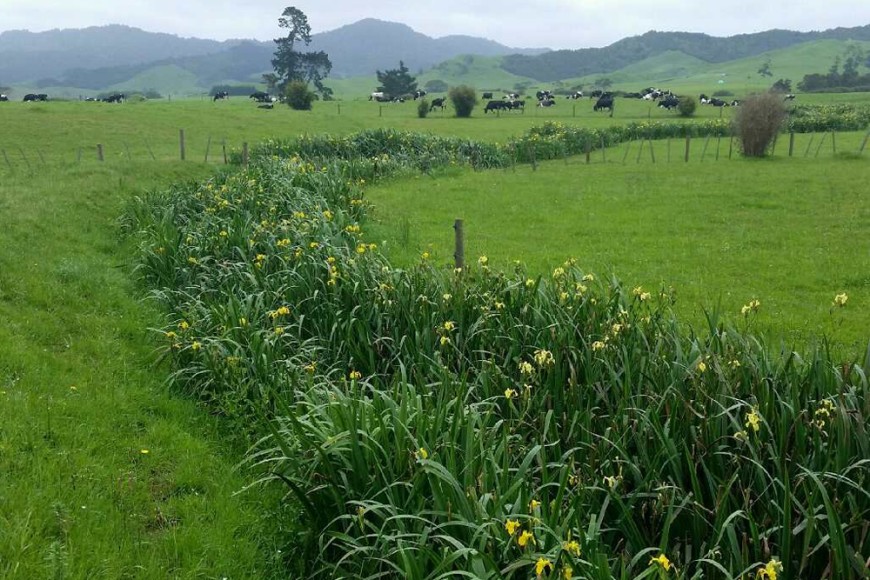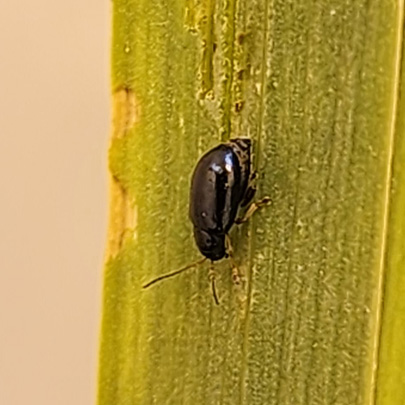Yellow Flag Iris Flea Beetle Touches Down

Yellow flag iris in waterway
Yellow flag iris is native to Europe and northern Africa but was exported around the world because of its attractive yellow flowers. It became invasive in several regions in the southern hemisphere, including in New Zealand, Australia, Argentina, and South Africa. It can spread by seed and vegetative structures, forming thick networks of rhizomes in and around waterways. Yellow flag iris infestations negatively affect native biodiversity by displacing desirable plants, alter the flow of waterways contributing to flooding, and invade paddocks and parks, disrupting agricultural and recreational activity. It is difficult to control due to the issues relating to herbicide use near water, and because manual removal is labour intensive, and any overlooked rhizomes regenerate rapidly. In New Zealand yellow flag iris is a National Pest Plant Accord species, which means it is an unwanted organism under the Biosecurity Act 1993. Consequently, this plant cannot be propagated, distributed, or sold in New Zealand.

Image: Yellow flag iris beetle
We are fortunate that South Africa had already started developing a biocontrol programme for yellow flag iris. Rhodes University, along with Vrije Universiteit in Amsterdam, undertook surveys of yellow flag iris in parts of the native range and identified three candidate biocontrol agents. The flea beetle was regarded as the most promising option, and host specificity testing has largely been completed at Rhodes University, with encouraging results.
The flea beetle is a tiny beetle that jumps when disturbed. The adults nibble on yellow flag iris leaves, preferring fresh tips. Eggs are laid in the soil and larvae feed on the rhizomes, causing extensive damage. Host specificity testing has shown that the flea beetle is an iris specialist, being able to feed and complete development on several species in the Iris genus.
New Zealand’s closest native relatives to yellow flag iris are species in the genus Libertia. While Libertia species are phylogenetically distant from yellow flag iris, it was important to test representatives of this genus to confirm the flea beetle does not pose a risk to these native plants. Now that the flea beetle is being reared in containment at Lincoln, we are confident we will be able to complete enough testing to determine whether it is sufficiently host specific for release in New Zealand.
Funding
This project is funded by the National Biocontrol Collective and the Ministry for Primary Industries’ Sustainable Food and Fibre Futures Fund (Grant #20095) on multi-weed biocontrol.

